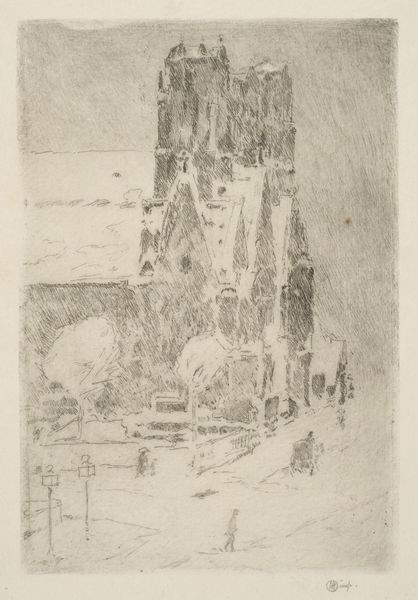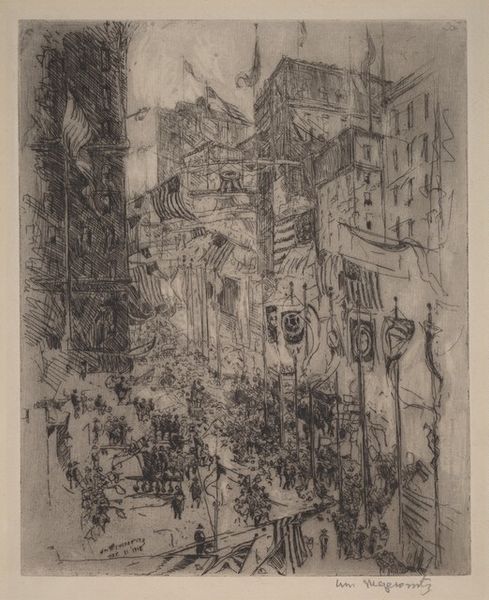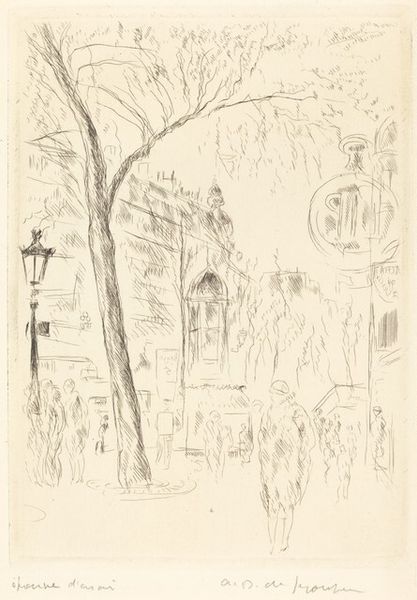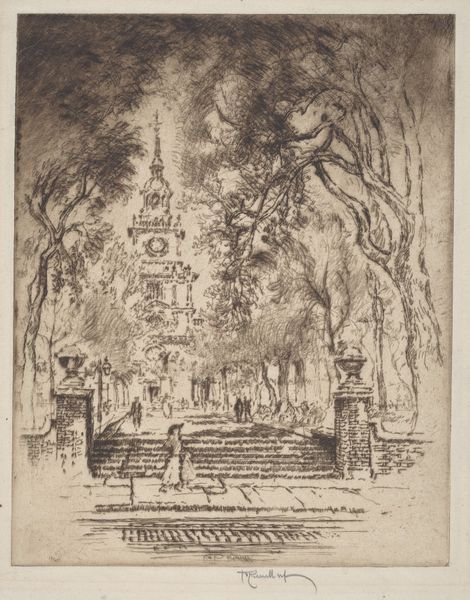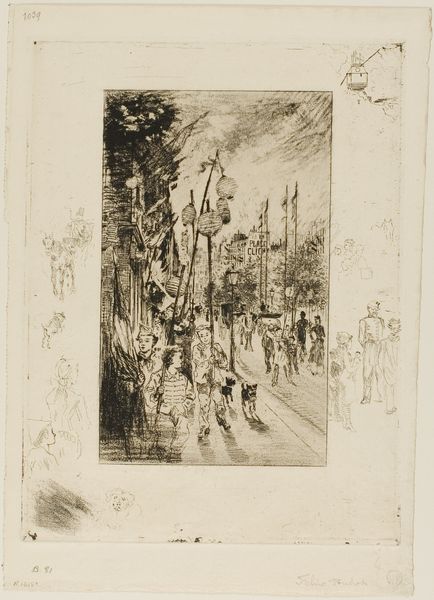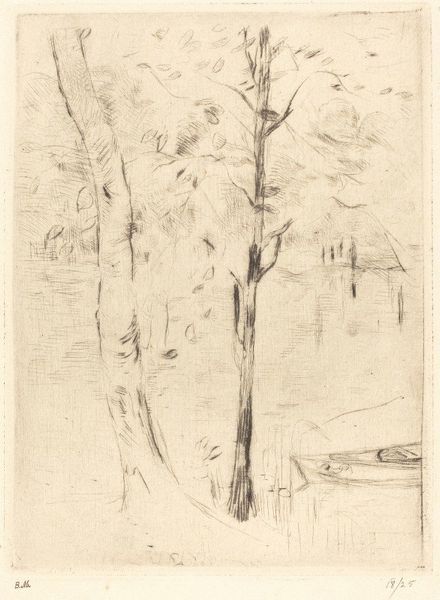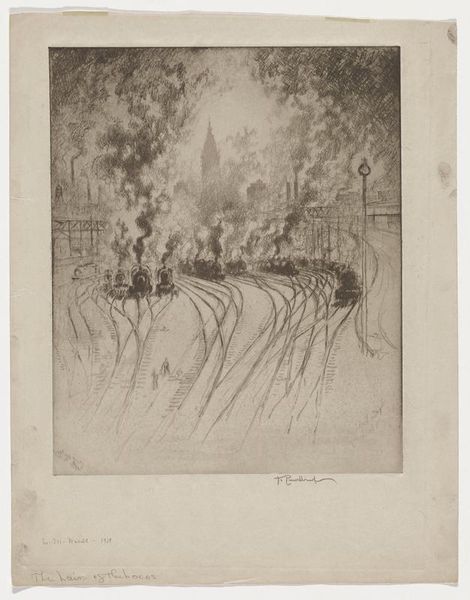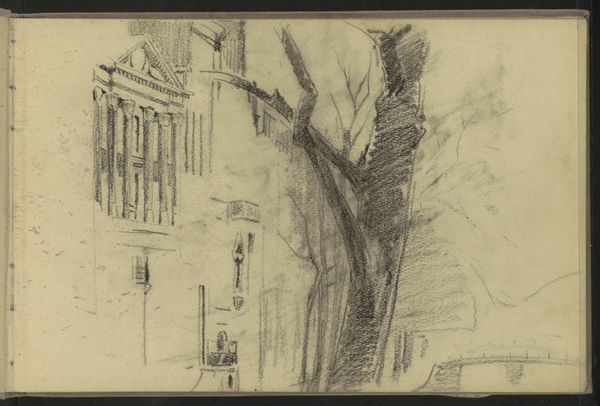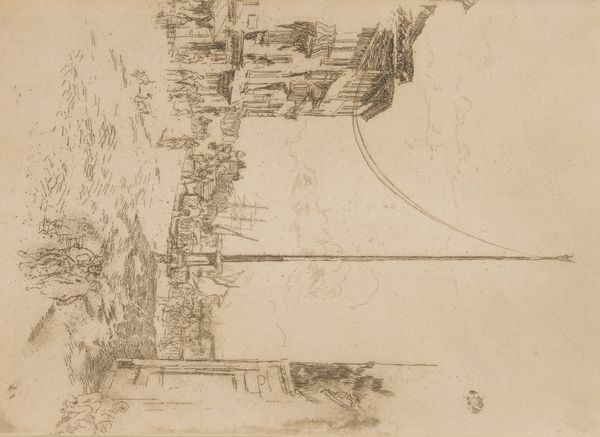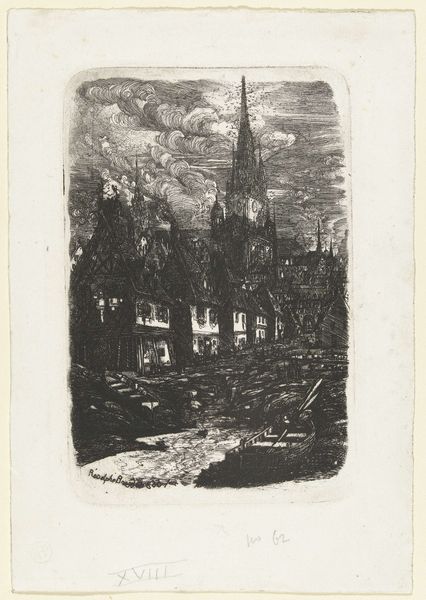
drawing, print, etching, ink
#
precisionism
#
drawing
# print
#
etching
#
ink
#
geometric
#
cityscape
#
modernism
Dimensions: plate: 30.16 × 25.4 cm (11 7/8 × 10 in.) sheet: 37.78 × 29.53 cm (14 7/8 × 11 5/8 in.)
Copyright: National Gallery of Art: CC0 1.0
Editor: So, here we have John Marin’s "Woolworth Building, No. 1," created in 1913 using etching and ink. It’s quite striking, almost vibrating with energy, and I’m curious how he achieved that effect with such simple materials. What's your interpretation? Curator: I think we can understand this piece better by focusing on Marin’s process and materials. Look at the rapid, almost frantic etching lines. They’re not just depicting the building, they're performing the anxiety and excitement around industrialization. Ink, usually seen as a drafting tool, is used to suggest dynamism. Editor: That's interesting. So the deliberate choice of materials and the application technique aren’t just about representation but also about evoking the cultural moment? Curator: Exactly! The Woolworth Building, a symbol of burgeoning capitalism and technological prowess, is rendered through a visibly labored process. Notice how he avoids clean, precise lines for a more expressive rendering? Editor: Yes, now that you mention it, it’s almost as if the building itself is being constructed and deconstructed simultaneously. Was Marin commenting on the labor that went into constructing this iconic building? Curator: Perhaps indirectly. More likely, he's highlighting the *act* of creation itself. Etching is an inherently industrial process; he's using an industrial technique to capture an industrial icon, but imbuing it with a very personal and gestural application. This blurs the lines between high art and the everyday reality of labor and production. Editor: That makes me think about how we consume images and the built environment. Thanks, I see so much more now! Curator: Indeed, understanding the process encourages us to consider the conditions under which both art and architecture are produced and consumed.
Comments
No comments
Be the first to comment and join the conversation on the ultimate creative platform.

